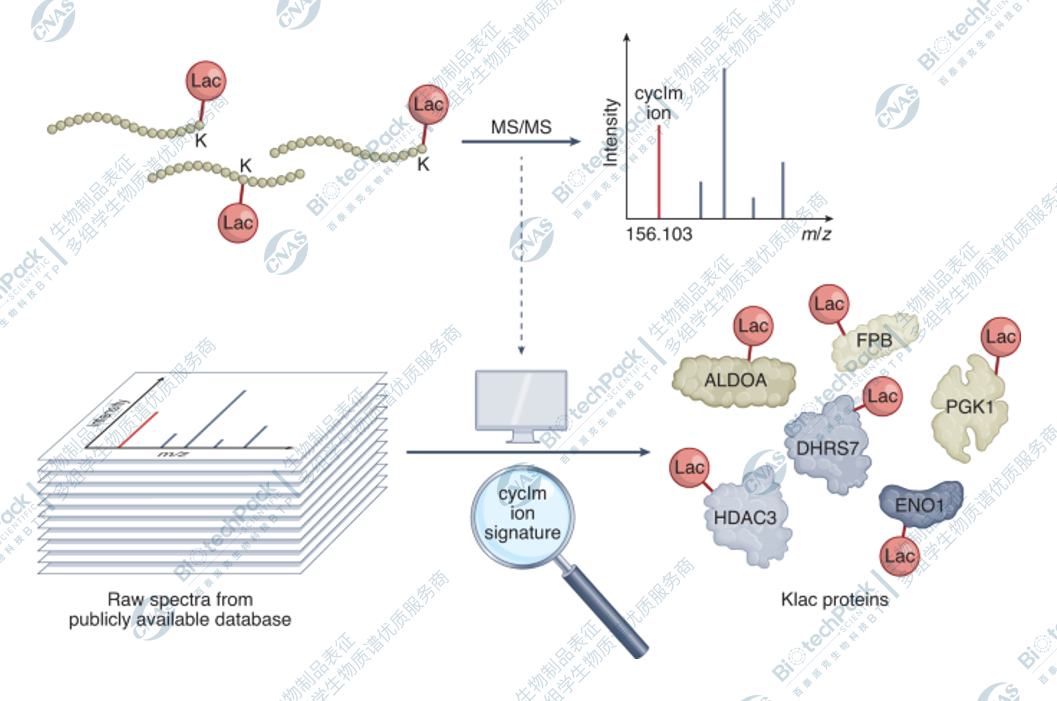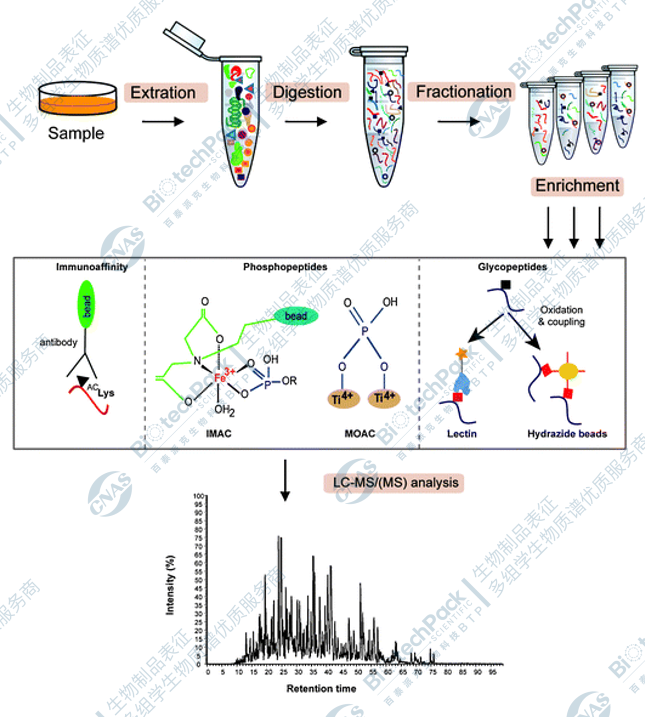Protein Lactylation Modification
In the fields of cell biology and biochemistry, protein translationposttranslational modifications (PTMs) play a crucial role, affecting protein stability, activity, localization, and function. Lactylationisan important proteinpost-translationalmodificationmethodthat can occur on any protein residue with a free amino group, such as lysine, arginine, and tyrosineetc.Under the action oflactoyl-CoA transferase,lactate forms ester bonds withamino acidresidues in the substrate protein,leading to changes in the protein's structure and function, thereby affecting various biological processes such as cell signaling, gene expression, and cell metabolism. Therefore, accurately identifying and characterizing lactylation sites on proteins is key to understanding their biological functions and developing related applications.
Mass spectrometry is an important tool for the identification and study of lactylated proteins. Through mass spectrometry analysis, we can accurately determine the location of lactylation and how the degree of lactylation affects protein structure and function. Additionally, mass spectrometry is used to screen for new lactylation sites, offering deeper insights into protein lactylation research. The study of lactylation modifications has wide-ranging applications, including but not limited to understanding protein structure and function, researching disease mechanisms, and developing new drugs, as well as helping us understand the complexity and dynamics of biological systems.

Wu, X. et. al. Nat. Methods. 2022.
Mass spectrometry analysis of protein lactylation modifications
Biotechnology company BTP, leveragingThermo's recently launched ObitrapExploris 240mass spectrometer in combination with Nano-LC micro-liquid chromatography technology,has developed a high-precisionprotein lactylation modification analysisplatform that can identify the precise locations of lactylation modifications, assess their dynamic changes under different conditions, and reveal their effects on protein structure and function. Whether you are studying the basic mechanisms of lactylation modifications or exploring their roles in disease onset and progression, BTP can provide comprehensive, efficient, and customized analytical solutions to meet your needs. Feel free to contact us for more detailed information and service content on protein lactylation modification analysis.
Lactylation modificationanalysisprocess
1. Protein sample preparation:Extract proteins from biological samples.
2. Protein digestion:Usetrypsinorchymotrypsinetc.to digest proteins, breaking them down intosmallpeptides.
3. Liquid chromatography separation: Usehigh-performanceliquid chromatography to further separate enriched peptides.
4. Peptide enrichment: Use affinity enrichment techniques,such asantibody enrichment or specific solid-phase extraction techniques,to enrichlactylated peptides.
5. Mass spectrometry analysis: Use mass spectrometry to determine the mass of peptides, then fragment the peptides and measure the mass of the fragment ions to obtain the amino acid sequence of the peptides and the lactylation sitesand quantitative information.

Angel, T. E. et. al. Chem. Soc. Rev. 2012.
Lactylation modification analysis process
Technical advantages of mass spectrometry in protein lactylation analysis
1. Sensitivity and accuracy:
Mass spectrometry can accurately and sensitively detect protein lactylation modifications even at very low abundance.
2. Locating modification sites:
Mass spectrometry can detect whether proteins are lactylated and precisely determine which amino acid residues are modified, providing key information for studying how lactylation affects protein structure and function.
3. Quantitative capability:
Using labeled and label-free mass spectrometry quantification strategies, the relative or absolute abundance of lactylation modifications can be assessed to understand the dynamic changes of modifications on biological processes.
4. High-throughput analysis:
Mass spectrometry can identify and quantify hundreds to thousands of lactylation sites in a single experiment, enabling large-scale analysis.
5. Compatibility:
Mass spectrometry can be combined with other biological techniques, such as immunoprecipitation, chromatin immunoprecipitation, and bioinformatics analysis, to gain deeper research insights.
Bilingual project report in Chinese/English
In the technical report, BTP provides you with a detailed bilingual (Chinese/English) version of the technical report, which includes:
1. Experimental steps (Chinese/English)
2. Relevant mass spectrometry parameters (Chinese/English)
3. Detailed information on protein lactylation modifications
4. Mass spectrometry images
5. Raw data
One-stop service for protein lactylation modifications
All you need to do is place an order and send your samples
BTP's one-stop service completes: sample processing, on-machine analysis, data analysis, and project report
Related services
Protein deamidation modification analysis
Protein oxidation modification analysis
Post-translational modification proteomics analysis
Quantitative proteomic analysis
Protein mass spectrometry identification
Phosphorylation quantitative proteomics study
How to order?





